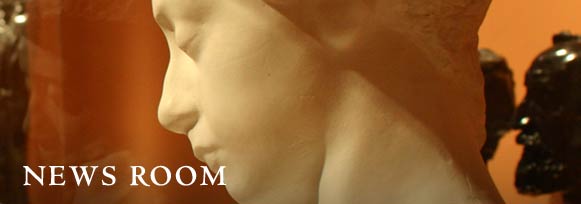Cantor Arts Center Expands Hours: Open Six Days a Week
Beginning September 22, 2014, the Cantor
Will Be Open on Mondays
Stanford, Calif., September 3, 2014 —The Cantor Arts Center at Stanford University announces expanded public hours. Starting September 22, 2014 the Cantor will be open six days per week, with visitor hours also on Mondays. New hours are Wednesday through Monday 11 a.m. to 5 p.m., plus Thursday evening until 8 p.m. The Cantor will be closed only on Tuesdays, Thanksgiving Day and Christmas Day. The Cantor continues to offer free admission.
“With the museum open six days, students and faculty get an extra weekday to engage with our exhibitions, collections and professional staff—making the Cantor even more valuable as an interdisciplinary resource at Stanford for research and teaching,” said Cantor Director Connie Wolf.
Being open on Mondays—a day when most museums and galleries are closed—also expands services to the public. This will allow the museum to be open on Martin Luther King Day, Presidents’ Day, Memorial Day and Labor Day and provide expanded opportunities to enjoy the arts at Stanford. “Since 1999, the Cantor has been open on July 4th whenever it fell on one of our normal visitor days,” said Wolf. “We saw that attendance was at levels comparable to other days, and we have also noticed high visitor counts for New Year’s Day and Easter. We can better serve the needs of the community by being open on more holidays.”
The Rodin Sculpture Garden at the Cantor Arts Center is always open and free to the public, with lighting for nighttime viewing. Other outdoor art on the Stanford campus is available for viewing daily; an online guide is at arts.stanford.edu/map.
Cantor Arts Center
The Cantor Arts Center at Stanford University is a vital and dynamic institution with a venerable history. Founded in 1891 with the university, the historic museum was expanded and renamed in 1999 for lead donors Iris and B. Gerald Cantor. The Cantor’s encyclopedic collection spans 5,000 years, includes more than 40,000 artworks and beckons visitors to travel around the world and through time: from Africa to the Americas to Asia, from classical to contemporary. With 24 galleries presenting selections from the collection and more than 20 special exhibitions each year, the Cantor serves Stanford’s academic community, draws art lovers from the San Francisco Bay Area and beyond and attracts campus visitors from around the world. Free admission, free tours, lectures, family activities plus changing exhibitions make the Cantor one of the most well-attended university art museums in the country and a great resource for teaching and research on campus.
The Cantor collects, preserves and studies art from all cultures and periods, serving Stanford University and the public through exhibitions and programs that inspire the understanding and enjoyment of art.
# # #
Notes to Editors
• To arrange interviews and for further information, contact Anna Koster, Head of Communications, Cantor Arts Center, 650-725-4657, akoster@stanford.edu
• For high-resolution publicity images, contact PR Assistant Manager Margaret Whitehorn, Cantor Arts Center, 650-724-3600, mmwhite@stanford.edu
Admission is FREE
Cool Café open Wed–Sun

Connie Wolf, John and Jill Freidenrich Director



